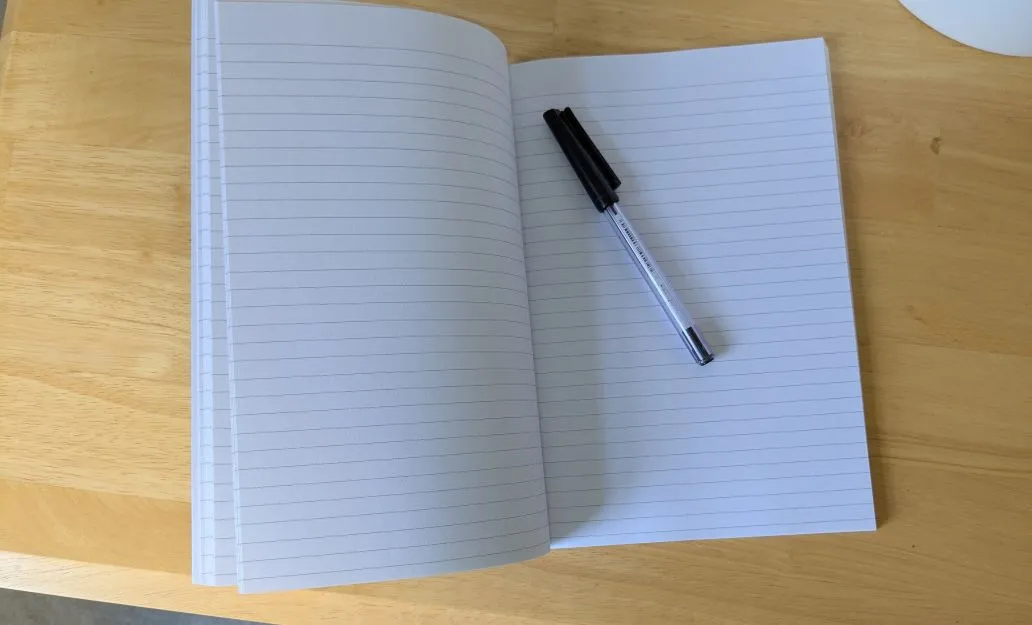I want to talk about one of the most powerful tools for developing emotional self-awareness. JOURNALING. Over the years, I have seen how something as simple as putting pen to paper (or fingers to keyboard) can completely transform the way people understand themselves and their emotions.
When you journal, you’re not just writing words, you are mapping your inner world. You’re noticing your emotional patterns, tracing the triggers, and making sense of the thoughts and feelings that often go unspoken.
Why Journaling Works for Emotional Awareness
Think of journaling as a private conversation with yourself — one where you can be completely honest, no filter required. Every time you write, you capture a snapshot of your emotional state, building a richer understanding of who you are and what’s going on beneath the surface.
The Science Backs It Up
Research shows that journaling activates both sides of your brain, reduces stress and anxiety, helps you process complex emotions, improves emotional regulation, and deepens self-understanding.
In other words, it’s not just “nice” to do; it’s an evidence-based practice for emotional health.
Questions to Ask Yourself as You Journal
If you want to go deeper, try reflecting on questions like:
-
What emotions are easiest for me to write about?
-
Which feelings are harder to put into words?
-
What patterns do I notice in my emotional responses?
-
How does my writing style change when I feel different emotions?
-
What triggers keep showing up in my journal?
-
What surprises me about my reactions?
-
How has my awareness changed since I started journaling?
Types of Emotional Journaling
There’s no single “right” way to journal. Try different approaches until you find the ones that fit your personality and lifestyle.
1. Free Writing
This is stream-of-consciousness writing. Simply let the words spill out without editing or filtering. Free writing captures raw, unpolished emotional expression and immediate thoughts and feelings exactly as they appear.
2. Structured Prompts
With structured prompts, you respond to guided questions or specific topics. This creates a focus, helping you reflect on certain themes or explore targeted aspects of your emotional life.
3. Emotion Tracking
Emotion tracking is more like keeping a mood log. You record your daily emotional “weather,” spot triggers as they happen, and begin to see patterns over time.
4. Gratitude Journaling
Gratitude journaling shifts your attention toward what’s working in your life. By recognising moments of joy and appreciation, you build a more balanced emotional perspective.
Getting Started
Create Your Space — Choose somewhere comfortable, set aside dedicated time, minimise distractions, and keep your journal close at hand.
Set the Mood — A calming environment makes a difference. Play soft music, light a candle, or use a diffuser if you like. The more inviting it feels, the more likely you’ll return to it.
Techniques to Try
The WRITE Technique
-
Identify what you’re feeling right now.
-
Explore why that feeling is there.
-
Investigate the thoughts behind it.
-
Notice any physical sensations.
-
Express yourself without judgement.
Emotional Depth Diving
Start with the obvious feeling, then ask: “What’s underneath this?” Connect it to past experiences, see if there’s a pattern, and draw your own conclusions.
Overcoming Common Challenges
-
“I don’t know what to write.” Start with “I feel…” and keep going.
-
“I don’t have time.” Commit to just five minutes on a daily or weekly basis.
-
“Someone might read it.” Use a private notebook or password-protected file.
Advanced Practices Dialogue Writing
Write as if you’re speaking directly to your emotions. Let them “reply” so you can see different perspectives and resolve inner conflicts.
Visual Journaling
Combine words with drawings, colours, mind maps, or even photos. Sometimes an image expresses more than a sentence can.
Poetry and Metaphor
If you’re drawn to creative writing, use poetry or metaphor to capture emotional nuances and imagery.
Making It Part of Your Day
-
Morning Pages — Write first thing to clear mental clutter, set intentions, and start the day grounded.
-
Evening Reflection — Look back on the day, release tension, celebrate wins, and prepare for tomorrow.
Using Your Journal for Growth
Spot the Patterns — Review past entries, notice recurring themes, and recognise triggers.
Turn Insight into Action — Set emotional goals, create coping strategies, and plan how you’ll respond to future challenges.
Beyond Personal Growth: Career and Study Benefits
In your career, journaling can help you process workplace stress, plan tough conversations, track progress, and stay focused on professional growth.
In education, it’s a great way to handle study pressure, process feedback, and keep your motivation steady.
Building a Habit That Lasts
Start small, grow steadily, and link journaling to something you already do like your morning coffee or bedtime routine.
Celebrate your progress, remind yourself why it helps, and connect with others who journal to keep the motivation alive.
Find Your Style
Experiment with different times, places, and formats. Maybe you’ll prefer long, reflective entries in the evening — or quick morning bursts before the day begins. There’s no rulebook here.
Final Thoughts
Journaling for emotional awareness is less about creating perfect entries and more about building a safe space where you can understand yourself better.
Whether you write for five minutes or an hour, every page is an investment in your emotional well-being.
Start where you are. Write what you feel. And let the process shape your awareness, one entry at a time.


